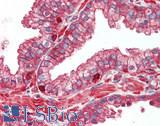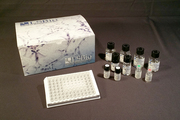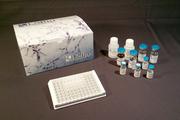Login
Registration enables users to use special features of this website, such as past
order histories, retained contact details for faster checkout, review submissions, and special promotions.
order histories, retained contact details for faster checkout, review submissions, and special promotions.
Forgot password?
Registration enables users to use special features of this website, such as past
order histories, retained contact details for faster checkout, review submissions, and special promotions.
order histories, retained contact details for faster checkout, review submissions, and special promotions.
Quick Order
Products
Antibodies
ELISA and Assay Kits
Research Areas
Infectious Disease
Resources
Purchasing
Reference Material
Contact Us
Locations
Orders Processing,
Shipping & Receiving,
Warehouse
2 Shaker Rd Suites
B001/B101
Shirley, MA 01464
Production Lab
Floor 6, Suite 620
20700 44th Avenue W
Lynnwood, WA 98036
Telephone Numbers
Tel: +1 (206) 374-1102
Fax: +1 (206) 577-4565
Contact Us
Additional Contact Details
Login
Registration enables users to use special features of this website, such as past
order histories, retained contact details for faster checkout, review submissions, and special promotions.
order histories, retained contact details for faster checkout, review submissions, and special promotions.
Forgot password?
Registration enables users to use special features of this website, such as past
order histories, retained contact details for faster checkout, review submissions, and special promotions.
order histories, retained contact details for faster checkout, review submissions, and special promotions.
Quick Order
| Catalog Number | Size | Price |
|---|---|---|
| LS-C154944-100 | 100 µg (0.5 mg/ml) | $503 |

Polyclonal Goat anti‑Mouse KCNC3 / Kv3.3 Antibody (aa651‑663, WB) LS‑C154944
Polyclonal Goat anti‑Mouse KCNC3 / Kv3.3 Antibody (aa651‑663, WB) LS‑C154944
Antibody:
KCNC3 / Kv3.3 Goat anti-Mouse Polyclonal (aa651-663) Antibody
Application:
WB, Peptide-ELISA
Reactivity:
Mouse, Rat
Format:
Unconjugated, Unmodified
Toll Free North America
 206-374-1102
206-374-1102
For Research Use Only
Overview
Antibody:
KCNC3 / Kv3.3 Goat anti-Mouse Polyclonal (aa651-663) Antibody
Application:
WB, Peptide-ELISA
Reactivity:
Mouse, Rat
Format:
Unconjugated, Unmodified
Specifications
Description
Kv3.3 antibody LS-C154944 is an unconjugated goat polyclonal antibody to Kv3.3 (KCNC3) (aa651-663) from mouse. It is reactive with mouse and rat. Validated for Peptide-ELISA and WB.
Target
Mouse KCNC3 / Kv3.3
Synonyms
KCNC3 | KSHIIID | SCA13 | Spinocerebellar ataxia 13 | KV3.3
Host
Goat
Reactivity
Mouse, Rat
(tested or 100% immunogen sequence identity)
Clonality
Polyclonal
Conjugations
Unconjugated
Purification
Purified from goat serum by ammonium sulphate precipitation followed by antigen affinity chromatography using the immunizing peptide.
Modifications
Unmodified
Immunogen
Peptide with sequence C-QEEVIETNRADPR, from the internal region of the protein sequence according to NP_032448.2.
Epitope
aa651-663
Specificity
Mouse KCNC3 / Kv3.3.
Applications
- Western blot (0.2 - 0.6 µg/ml)
- Peptide Enzyme-Linked Immunosorbent Assay (1:64000)
Usage
Peptide ELISA: antibody detection limit dilution 1:64000. Western blot: Approx 80kD band observed in Mouse fetal Brain lysates (calculated MW of 81.9kD according to NP_032448.2). Recommended concentration: 0.2-0.6 ug/ml. Some minor background is detected and is blocked by the immunizing peptide. We call for caution when used for other assays than Western blot.
Presentation
TBS, pH 7.3, 0.02% Sodium Azide, 0.5% BSA
Storage
Aliquot and store at -20°C. Avoid freeze-thaw cycles.
Restrictions
For research use only. Intended for use by laboratory professionals.
About KCNC3 / Kv3.3
Publications (0)
Customer Reviews (0)
Featured Products
Species:
Human, Monkey, Mouse, Rat, Dog
Applications:
IHC, IHC - Paraffin, Immunofluorescence, Western blot
Source:
E. coli
Tag:
6His, N-terminus
Reactivity:
Mouse
Range:
78-5000 pg/ml
Request SDS/MSDS
To request an SDS/MSDS form for this product, please contact our Technical Support department at:
Technical.Support@LSBio.com
Requested From: United States
Date Requested: 4/26/2024
Date Requested: 4/26/2024














